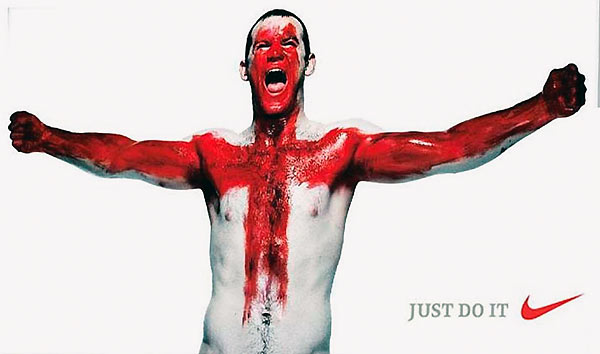I’d never noticed how many ads there are aimed at girls and young women that use the imagery of Eve, until dr Katie Edwards showed some examples at the Youthwork Summit last weekend. It was good to be reminded that the ads that I barely see, or that I ignore because I find them offensive for using religious imagery, have a huge impact on teens and young adults, especially on their self-image.
If Eve is constantly portrayed as sexy, sassy, seductive, what message does that communicate to girls? That that is what they should be like. As dr Katie Edwards put it: ‘men should want you, women should be jealous’. It’s a popular message of feminist empowerment, but one solely based on sexuality. But if that is all that girls hear and see, how will they know there’s another way, a more healthy or even a more Biblical way to be a ‘powerful woman’?
This generation is known for being able to maintain different identities in different ‘boxes’ of their lives. Andrew Graystone in his talk at the Youthwork Summit said this: “Young people spend a lot of time projecting themselves online in social media. But they tend to take on different images, different identities in different contexts.”
That means it’s crucially important to show students that their identity in ‘church life’ for instance should be the same as their identity in ‘school life’. If we don’t make students aware of their culture, if we don’t help them navigate it (and part of that is to help them stay true to their ‘real’ identity), we run a great risk of them developing a split self-image: their ‘church-self-image’ will reflect some of what they’ve been taught in the Bible, but their ‘school-self-image’ will be greatly influenced by their culture. Ultimately, the strongest self-image will win…

It means we as youth workers have to not only passively observe the culture our young people are living in, but should actively help teens navigate it. Ads are just a small part of it, but an important part nonetheless. How do we help our youth navigate it? We make them aware, we help them analyze it and we offer alternatives.
1. Awareness
In the case of ads and commercial, the first step is to make young people aware of how these influence them. Why not bring some controversial ads to your next small group and discuss them? Dr Katie Edwards also showed a number of ads using Jesus imagery aimed at boys and young men, for instance one where Ronaldo is being portrayed as the Christ statue in Rio de Janeiro. What do the boys in your small group think of this? Or record some tv commercial aimed at youth and discuss these. Make your youth aware of what they see, of the message these ads and commercials want them to believe.
2. Analysis
The second step is to help students analyze what they see. Do they recognize the message that’s being communicated? Do they agree with this message or not? Take for instance the Nike ad pictured above, what do the boys think of this? Is it okay to show football players as gods?
3. Alternatives
Thirdly, we need to offer a Biblical alternative message. When the world wants girls to become temptresses, we need to show them what God has in mind for them, how He intended sexuality. We need to make sure young people realize that the messages their culture offers, are often not what God wants to tell them. If we want young people to navigate their culture with wisdom, they need to know that there are more ways than the dominant cultural message. They need to know that their culture is not a dictatorial rule, that they still have to choice to act differently than popular culture would want them to.
What can you do to help your students navigate their culture?
Leave A Comment